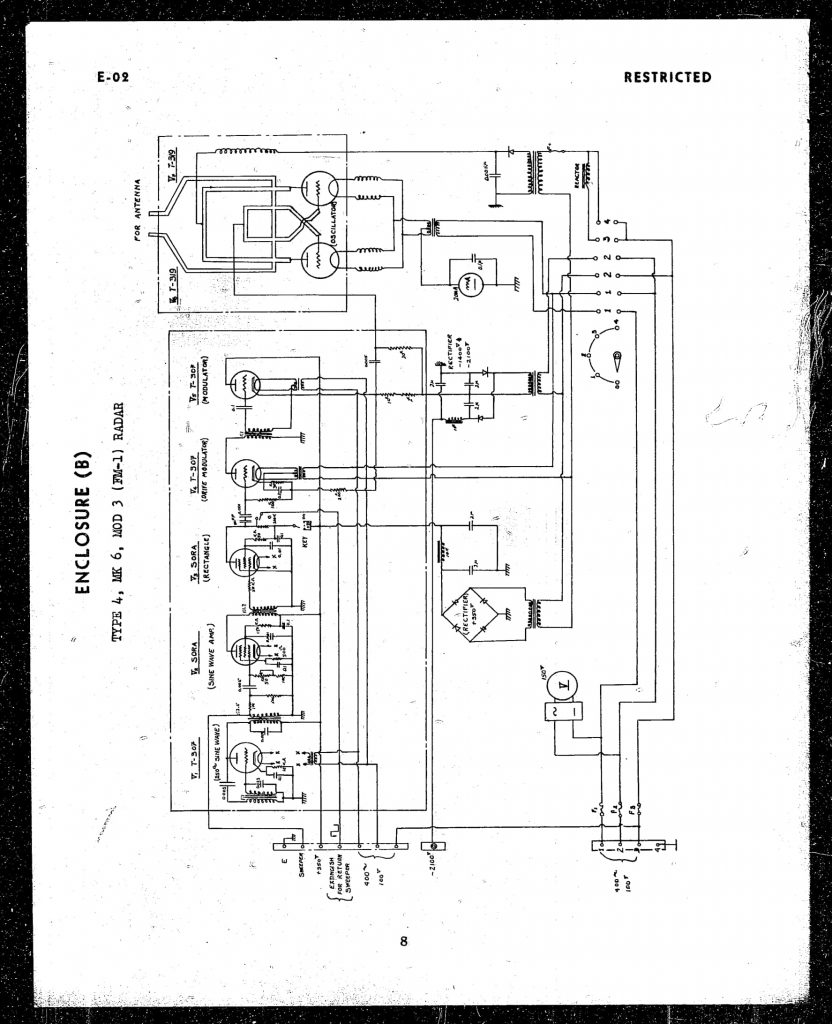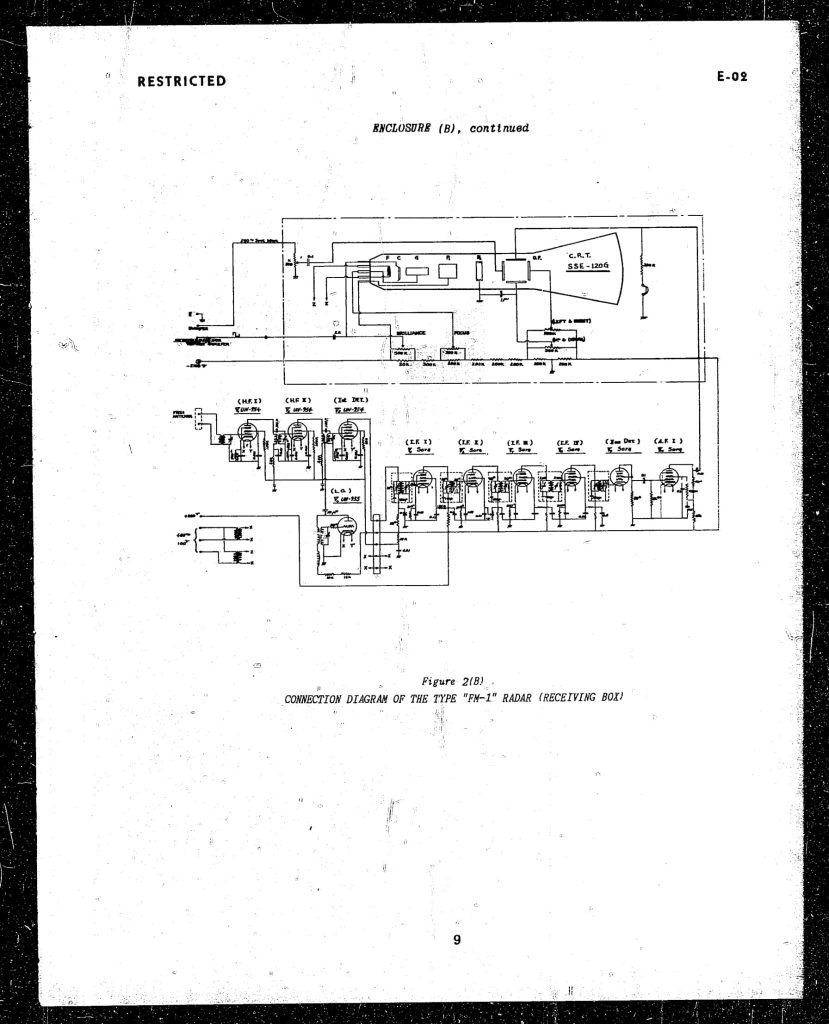四式空六号無線電信機三型 Shi-shiki kū-roku gō musen denshinki San-gata, Type 4 Ku 6 wireless telegraph Model 3). The FM-1 was an Air to Surface radar developed for small aircraft by Tokyo Shibaura Denki in 1944. Only one prototype was constructed and tested September 1944. The radar was with 70 kg lighter then the 110 kg weighting H-6, but it’s performance was the same. The type was deemed unpractical for use and was cancelled in favour of the FM-3.
Technical specifications
| 四式空六号無線電信機三型 / Type 4 Ku 6 wireless telegraph Model 3 | ||||
|---|---|---|---|---|
| Designation | FM-1 | |||
| Object | Patrol and Search | |||
| Research | started | February 1944 | ||
| Finished | September 1944 | |||
| Operational status | Development cancelled | |||
| Installation | Small Aircraft Observer’s Seat |
|||
| Frequency | 2 meter / 150 kHz | |||
| Power Output (Peak) | 4.2 kw | |||
| Pulse Length | 15 µs | |||
| Repetition Frequency | 250c/s | |||
| Weight | 70 kg | |||
| Units build | 1 experimental prototype | |||
| Transmitter | Oscillation Circuit | Modulated Oscillator | ||
| Oscillator Valve | U-319 x2 | |||
| Receiver | Intermed. Freq. | 10 mc | ||
| Detector | 1st UN-95A | 2nd SORA | ||
| Local oscillator | UN-955 | |||
| Scope Representation |
Diameter | 120 mm | ||
| Scanning Axis | Linear | |||
| Scale | Sinusoidal | |||
| Antenna | Type | Head: Yagi | Sides: Folded Doublet | |
| Gain | 16db | 6.5db | ||
| Beam Angle | Horiz. | θƒ = 30° | θƒ = 28° | |
| Vertical | θƒ = 35° | θƒ = 30° | ||
| Max. Range (Max.Effective Scale) | 250 km theoretical 90-110 km against large ships such as aircraft carriers 70 km agains aircraft |
|||
| Minimum Distance | 5 km at 1000 m | |||
| Accuracy of Range | ≃± 5% | |||
| Distance Discrimination | 4 km | |||
| Accuracy of Bearing | ± 3° | |||
| Angle Discrimination | ≃ 60° | |||
| No. Of Operators | Observer | |||
Sources
Reports of the U.S. Naval Technical Mission to Japan, 1945-1946. Series E-02 Japanese Airborne Radar

